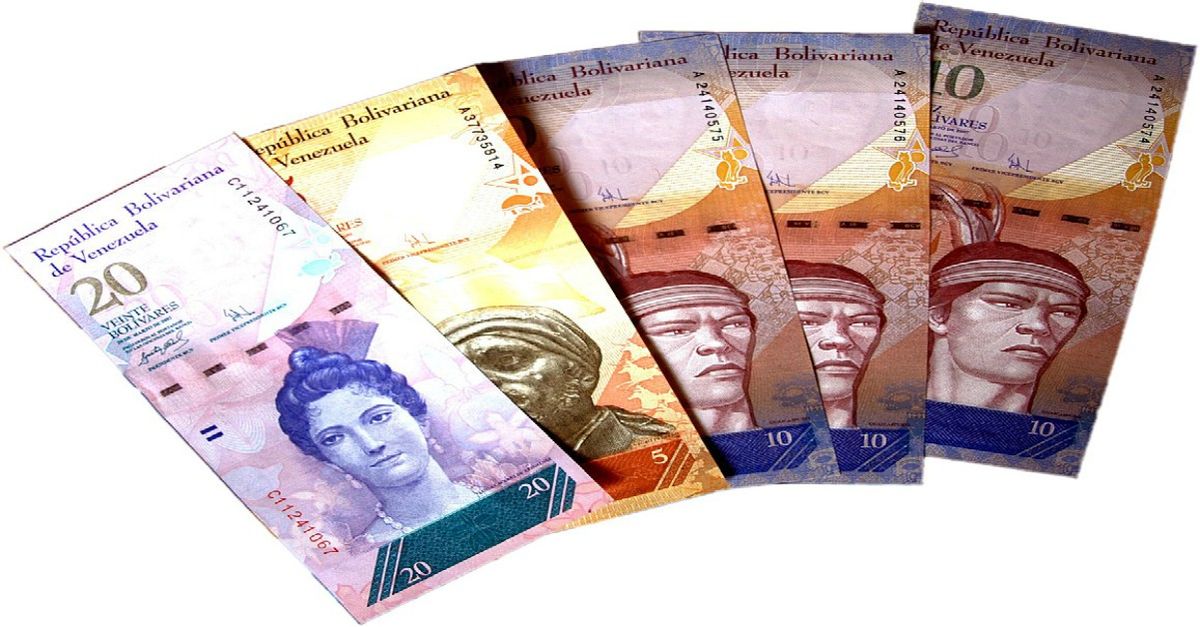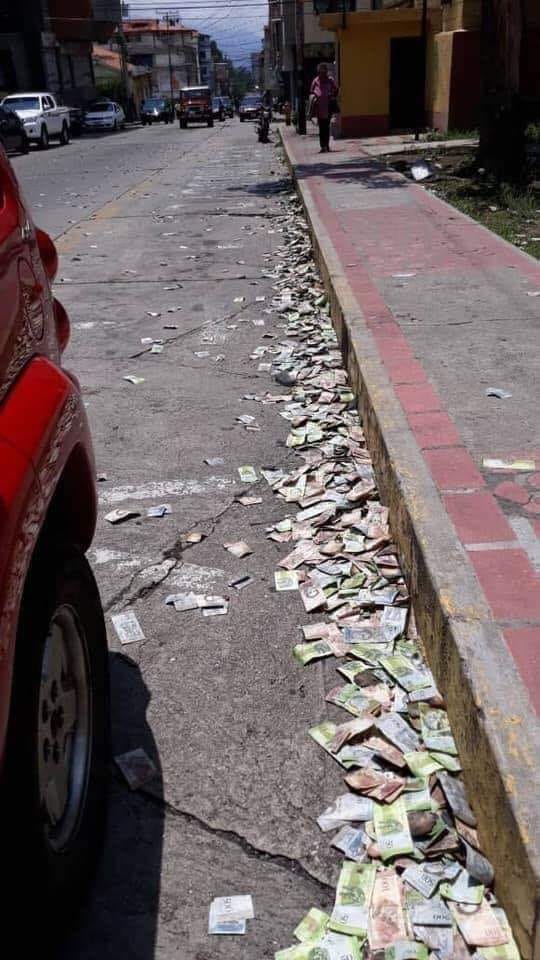In late March 2019, a photograph supposedly showing piles of "worthless" currency thrown into gutters in Venezuela circulated on social media, attached to comments blaming socialism for the phenomenon behind the striking visual. One popular posting on Facebook was captioned, "This is a street in Venezuela. That's money in the gutter. It's worthless. Welcome to socialism.":
This is a genuine photograph of worthless money dumped in the gutter of a Venezuelan street. However, the accompanying caption presents an oversimplification of the series of events that led to this currency's worthlessness and its discarding by Venezuelan residents.
The economic collapse in Venezuela that began in 2013 is a complex matter which can't be attributed to any single factor. News outlets such as Bloomberg, the New York Times, and Fox News have cited a wide range of issues that led to the country's current economic crisis, including plunging oil prices, government corruption, political unrest, and socialist policies. That brew of unfavorable economic conditions has spawned massive hyperinflation which has greatly devalued Venezuela's currency, as the Washington Post reported in January 2018:
Hyperinflation is disorienting. Five or six years ago, 500 bolivars would’ve bought you a meal for two with wine at the best restaurant in Caracas. As late as early last year, they would’ve bought you at least a cup of coffee. At the end of 2016, they still bought you a cup of café con leche, at least. Today, they buy you essentially nothing ... well, except for 132 gallons of the world’s most extravagantly subsidized gasoline.
Although hyperinflation has indeed caused the bolivar to become all but worthless, the caption on this viral photograph is a bit misleading. The money shown lying in the gutter in this picture is Venezuela's old currency, the Bolívar Fuerte, which was replaced by a new form of currency, the Bolivar Soberano, in August 2018. When the Bolivar Soberano was introduced, Bolívar Fuerte currency in amounts less than 1,000 ceased to be legal tender, and Bolivar Fuerte currency in all amounts was completely withdrawn on 5 December 2018. Hence the discarded money seen here was literally worthless not because it had no value, because it had been completely replaced by a newer currency and was no longer legal tender.
Here's an excerpt from a CNN report about the switch in currencies:
Venezuela issued a new currency in an attempt to bolster its crumbling economy as the International Monetary Fund (IMF) warned that inflation could hit one million percent this year.
The move, part of a dramatic raft of measures aimed at halting runaway hyperinflation, comes as thousands of Venezuelans continue to flee across the border into neighboring countries amid food and medicine shortages, political turmoil and soaring crime rates.
In a tweet posted following the unveiling of Venezuela's new currency, the country's president Nicolas Maduro hailed the recovery package as a "revolutionary formula."
The new "Bolivar Soberano" currency is worth 100,000 "old" Bolivares.
"We found the revolutionary formula that puts work in the center of the general re-adjustment of society, based on the production of goods and the value of salary. With that, we're gonna put to rest forever the perverse model that dollarized the prices in the country," tweeted Venezuela's 55-year-old leader.
"I call on the people to defend -- conscientiously -- the adjustment of the prices on street," Maduro later said in another tweet.
A bank holiday was declared, with banks remaining closed as the new currency took effect.
The rebranded currency, which has five fewer zeroes than the country's previous currency and will be pegged to a cryptocurrency called the Petro, is intended to simplify transactions.
The viral photograph was likely taken on 11 March 2019 and showed the aftermath of looting at a bank in the town of Merida. Local news outlet Maduradas.com compiled several other photographs of the incident and reported that the perpetrators had discarded the old money on the streets and even lit some of it on fire (translated via Google):
¡TERRIBLE! Encapuchados saquearon banco Bicentenario en Mérida y esparcieron bolívares del viejo cono monetario por las calles (+Fotos)
Este lunes 11 de marzo, encapuchados saquearon la agencia del banco Bicentenario en la avenida 3, de Glorias Patrias, en el estado Mérida.
El hecho fue confirmado por el diputado de la Asamblea Nacional Williams Dávila, así como por el corresponsal de El Nacional en el estado Mérida, Leonardo León.
A través de la red social Twitter, informaron que los ciudadanos esparcieron montones de billetes de viejo cono monetario en las calles, los cuales después fueron incendiados.
TERRIBLE! Hooded (vandals) sacked the bank Bicentenario in Merida and scattered bolivars of the old currency through the streets (+ Photos)
On Monday, March 11, hooded (vandals) sacked the Bicentenario bank agency on Avenue 3, Glorias Patrias, in the state of Merida.
The fact was confirmed by the deputy of the National Assembly Williams Dávila, as well as by the correspondent of El Nacional in the state of Mérida, Leonardo León.
Through the social network Twitter, they reported that citizens scattered piles of old money bills in the streets, which were then set on fire.
Venezuelan journalists and social media users shared several other photographs of the scene:
Ayer se produjo el saqueo de un banco bicentenario en la ciudad de Mérida, en las cercanías de la plaza Glorias Patrias. Los saqueadores incendiaron una pila de bolívares además de dejar muchos billetes por el suelo. pic.twitter.com/7gmL7FqMYo
— Descifrando la Guerra (@descifraguerra) March 12, 2019
¡TERRIBLE! Encapuchados saquearon banco Bicentenario en Mérida y esparcieron bolívares del viejo cono monetario por las calles https://t.co/6U3kFuMHn5 #LiberenALuisCarlos,#12Mar,#solidarioservicios pic.twitter.com/QT0fP9ifaF
— EntornoInteligente (@ENTORNOi) March 12, 2019
#Merida
Banco Bicentenario en Merida fue robado, sólo habían billetes del viejo cono monetario que terminaron tapizando las calles del centro de la ciudad
Venezuela es realismo magico y tragico
Sarai Suarez pic.twitter.com/lIeo2mpw70— Nellie B. Izarza ? ???? (@myteks) March 12, 2019
In short, the "money in gutters" image shown above captured an older and now invalid form of currency that was tossed aside after the looting of a bank, and not usable currency discarded by citizens because it had been made next to worthless due to "socialism."


